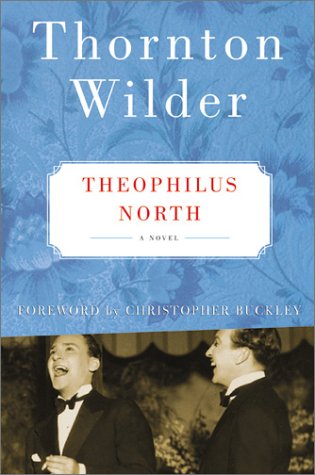“אני מכיר אנשים שמטפלים בחתולים, איש לא מכריח אותם לעשות זאת. אני מכיר אנשים שדווקא אינם עשירים, שתורמים לכל מיני אגודות ואנשים. אני יודע על אנשים שתמיד מחפשים לעזור וזה נותן להם סיפוק אמיתי. כזהו גיבור הספר הנ"ל שנקרא תיאופילוס נורט שהוא בחור צעיר אבל מאוד משכיל, ויודע שפות רבות ומגיע בשנות העשרים של המאה הקודמת, לעיר ניופורט ברוד איילנד, שהיא אחת הערים העתיקות בארה"ב. ניופורט היא אותה העיר שבה ה”







